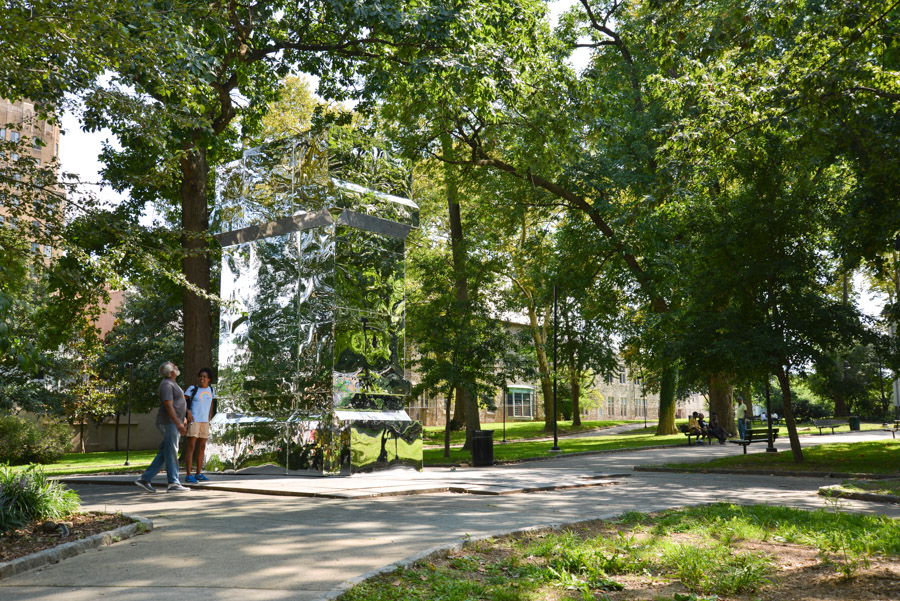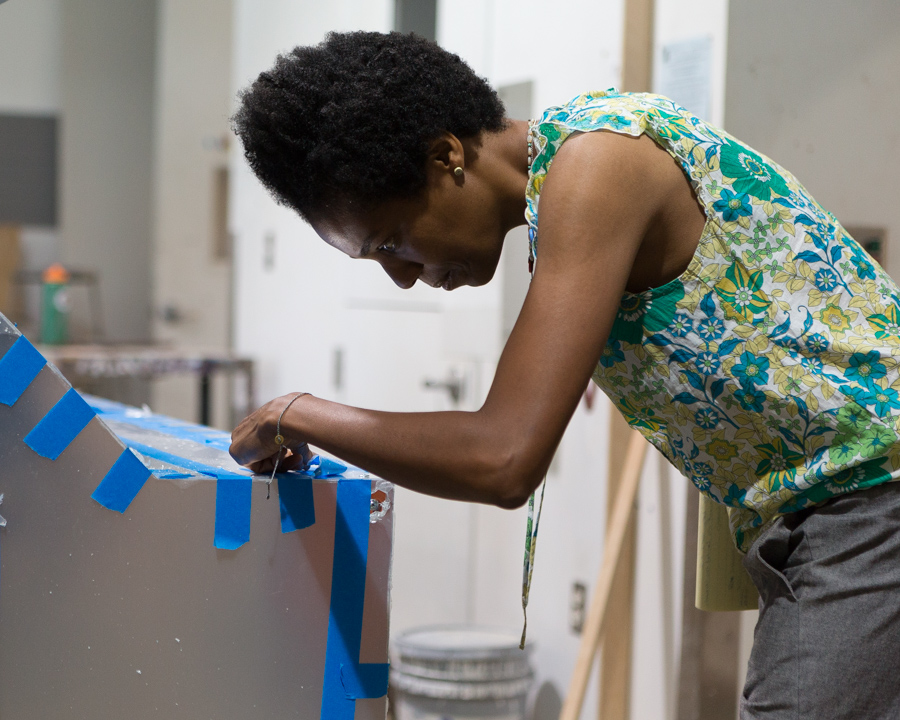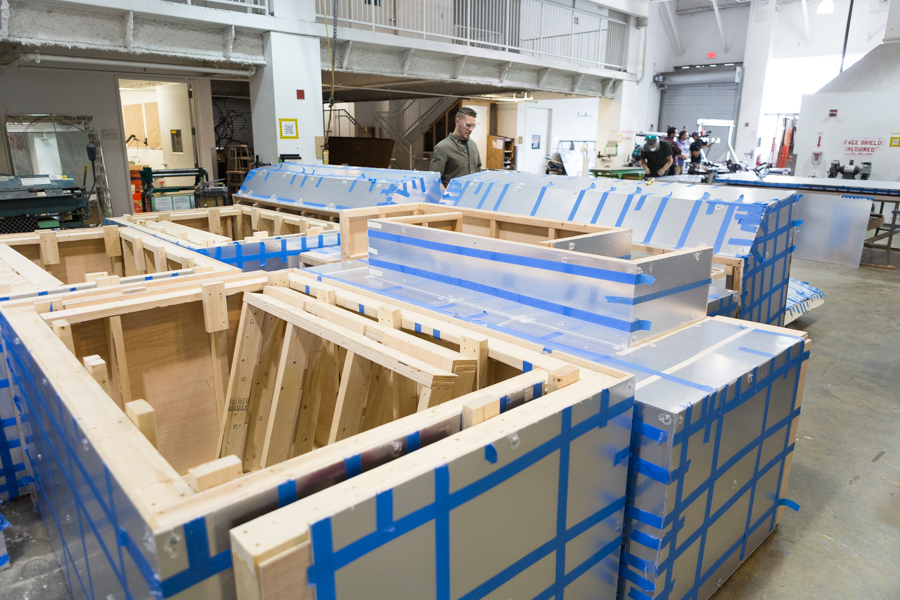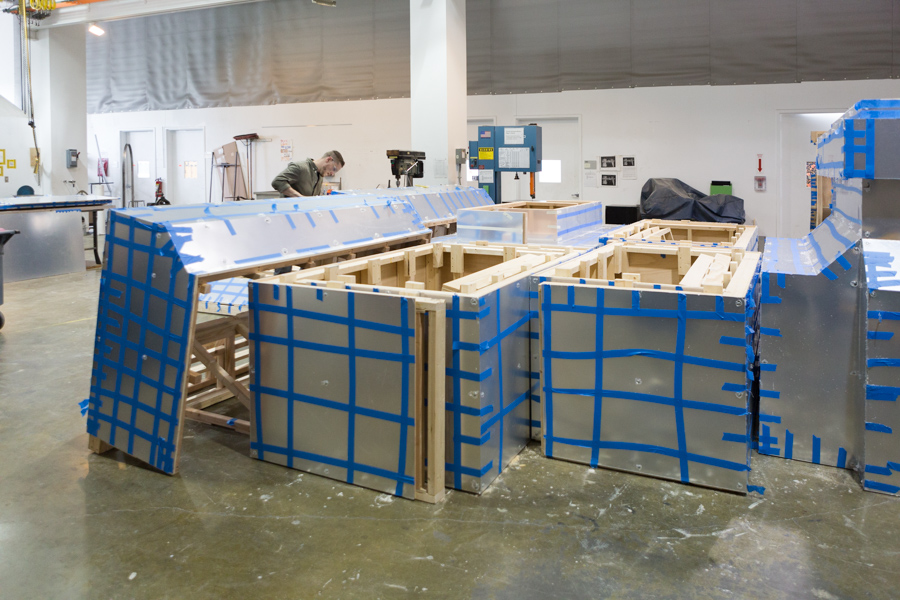Monument as “Restless Object”: An Interview with Karyn Olivier

Artist Karyn Olivier’s The Battle Is Joined is currently installed in Germantown’s Vernon Park—one of 20 Monument Lab projects across the city, Olivier’s work explores representation, identity, and reflection through the lens of history. See her work this Saturday, November 11, as part of our Vernon Park Saturday Spotlight event. Here, we asked her a few questions about the project.
How did you become interested in Monument Lab?
I’m interested in history, in the fullness of the situation, of a place or a street. I’ve done some site-specific work, and I’ve done some public art projects, and I like the idea of having to understand and spend time in a place. I’ve been living near Vernon Park for six years now, so it’s a neighborhood I know, but there’s always something to unearth. I liked the idea of having to reinvestigate a place I thought I knew. I loved the idea of doing research, because Germantown is so historic. Learning, unearthing, that sense of discovery—it seemed like a natural fit for me.
How did you come up with the idea for The Battle Is Joined?
I never thought about making another monument—the project had to interrogate something that was already here. There’s a street named after Francis Pastorius where I walk with my dogs, but I never looked him up. I knew he was a person, but no one taught me about him in school. I looked him up and I thought—that’s the monument that should be in the middle of the park! That’s the America that we want to be! He was a German immigrant who brought the first settlers to Germantown, and he led the first Quaker protest in 1688 against slavery. So he was fighting for black Americans to be citizens, to be free, and I thought, this guy’s amazing—how come I don’t know him? During World War I and World War II, the Pastorius Monument was boxed over, which is so tied to the fear we’re seeing today about immigrants and foreigners. It’s a very European-looking monument, and the Other was feared as it is today.
I’m always thinking about the complexity of history—monuments represent a single perspective, and single perspectives are always false. What does it mean to take the history of the Pastorius Monument, and combine it with the Battle of Germantown Memorial? The only reason why this monument exists is George Washington, and the powerful figure that he still is. He was fighting for America’s freedom while owning slaves. So how could I overlay these complex histories? I didn’t want to just repeat history—it had to reflect the present moment. So the mirror reflects a predominantly African American neighborhood. If it was mirrored, I knew the structure would disappear, in conversation with the Confederate monument controversy. I still wanted it to be monumental, so when you get up close, it goes from being invisible to taking on a monumental presence, even bigger than the original. When you get up close, you also see yourself in it. Monuments are about people—they’re about our humanity, or they should be. They should reflect our humility and our humbleness, the complexity of what it means to be human.
The fact that you can see it every day—I’m given that moment of pause, that reminder that we are here and I, too, can be the monument. I can claim this space. What does it mean for me to own this space, these monuments? How do I own the beauty and the less-beautiful in them? What does it mean when this comes down? I have to reckon with that. How do I go back and see this monument? What’s my responsibility to my community? Now that we’ve gathered around this thing, do we forget it? Or does it allow for a little shift? Does this proposition allow for action?
Can you talk a little bit about the meaning behind the title?
I had a hard time with the title! I had to ask my wife, because she’s so good with titles. I needed a title that went back to the history of the monument, because I didn’t want it to be an erasure. It had to be a conversation, so I knew the word “battle” had to be in there. “Joined” is about the disparate communities that use this park. Up there, a lot of the GFS kids will play soccer. There’s some drug activity over there, the senior center over there—all the beauty, the impoverishment, the humility, the humanity, the audaciousness of this park. It’s the richness that I love. Yes, I don’t want drugs in the park, but it’s a part of who we are and what is happening here. So what does it mean to rally around an object that reminds us we are a community, reminds us that we’re a neighborhood, that we’re empowered, that in our personal and our civic lives, we have a responsibility. This neighborhood is going through a lot—I’ve had some people come up to me and express that this project is a recognition that this city hasn’t forgotten about Germantown, that a financial investment will happen in this community. People see this as a reclaiming of the neighborhood. If we’re joined, we’re joined in this moment, in this spectrum of each moment. I’m hoping we’ll realize that we’re tethered, in many ways, to each other.

What does this project mean to you personally?
I’ve hung out in this park before, but I would never have experienced connections like this. I’ve had people pray with me here. There’s a responsibility that comes because this is my neighborhood. I knew I’d see it every other day, because I live so close. I wanted to honor my neighborhood, make something good enough that my neighbors would be proud, that people outside the neighborhood would come visit Germantown. I was hoping that it would remind people that we’re here, and we’re beautiful. I think it’s the most successful piece I’ve done. It’s a funny thing because now people in the park know me so well, but I usually think public art is great when people don’t think about the author. So it’s weird: they love the piece because of what it allows for themselves, to see themselves, but I think there is pride because I am black and I live in the neighborhood. I’ve heard them say, “She’s from our hood,” like “she’s ours.” It’s a strange thing for public art, but they needed to see a black artist make something that is monumental, that is getting attention. I’m a conduit—this monument is a conduit. I allowed this space where people can be proud. It’s mad pride.
Can you talk a little bit about the interplay between the organic and the rigid in this work?
I like that it looks like a fortress, that it is impenetrable. But what does it mean that at the same time, it’s reflecting me? It can’t not be both things at once. I like that it’s reflecting architecture, this constructed thing that’s counter to who we are, but within that it’s reflecting instability, the ever-changing nature of people and the landscape. I think about the Berlin Wall—that was a wall that separated families, communities, people. But in that famous photograph of a section of the wall coming down, you realize that these monuments made of stone are just as ephemeral as a fleeting moment, a leaf that turns brown. It’s susceptible to entropy just like anything else.
What’s your favorite monument?
The Vietnam War Memorial. I think that’s directly tied to this project. That’s what I think about, in terms of monuments. How could I make this work not sit still? It should be a restless object. I like the Crazy Horse one, too, because I love the premise. It’s so big that it’s a living monument. I mean, when will that monument be finished? I think just the head is done! I like that it’s always actively engaged, so it’s never finished, and you can’t forget it because it’s still in the making. The perpetual irresolution of it.
Lead Monument Lab partners include the City of Philadelphia; Philadelphia Parks & Recreation; Office of Arts, Culture, and the Creative Economy; Historic Philadelphia; Independence National Historic Park; Penn Institute for Urban Research; Pennsylvania Academy of the Fine Arts; Price Lab for Digital Humanities; and the University of Pennsylvania.
Major support for Monument Lab projects staged in Philadelphia’s five squares has been provided by The Pew Center for Arts & Heritage.
An expanded artist roster and projects at five neighborhood sites have been made possible by a significant grant from the William Penn Foundation.
Lead corporate sponsor is Bank of America.
Additional support has been provided by Susanna Lachs & Dean Adler, William & Debbie Becker, CLAWS Foundation, Comcast NBCUniversal, Davis Charitable Foundation, Hummingbird Foundation, J2 Design, National Endowment for the Arts, Nick & Dee Adams Charitable Fund, Parkway Corporation, PECO, Relief Communications LLC, Sonesta Philadelphia Rittenhouse Square, Stacey Spector & Ira Brind, Tiffany Tavarez, Tuttleman Family Foundation, Joe & Renee Zuritsky, and 432 Kickstarter backers. Support for Monument Lab‘s final publication provided by the Elizabeth Firestone Graham Foundation.
Media partner: WHYY






